Behnam Bahrak
University of Tehran
A Large-Scale Analysis of Persian Tweets Regarding Covid-19 Vaccination
Feb 09, 2023Abstract:The Covid-19 pandemic had an enormous effect on our lives, especially on people's interactions. By introducing Covid-19 vaccines, both positive and negative opinions were raised over the subject of taking vaccines or not. In this paper, using data gathered from Twitter, including tweets and user profiles, we offer a comprehensive analysis of public opinion in Iran about the Coronavirus vaccines. For this purpose, we applied a search query technique combined with a topic modeling approach to extract vaccine-related tweets. We utilized transformer-based models to classify the content of the tweets and extract themes revolving around vaccination. We also conducted an emotion analysis to evaluate the public happiness and anger around this topic. Our results demonstrate that Covid-19 vaccination has attracted considerable attention from different angles, such as governmental issues, safety or hesitancy, and side effects. Moreover, Coronavirus-relevant phenomena like public vaccination and the rate of infection deeply impacted public emotional status and users' interactions.
Persian Emotion Detection using ParsBERT and Imbalanced Data Handling Approaches
Nov 17, 2022



Abstract:Emotion recognition is one of the machine learning applications which can be done using text, speech, or image data gathered from social media spaces. Detecting emotion can help us in different fields, including opinion mining. With the spread of social media, different platforms like Twitter have become data sources, and the language used in these platforms is informal, making the emotion detection task difficult. EmoPars and ArmanEmo are two new human-labeled emotion datasets for the Persian language. These datasets, especially EmoPars, are suffering from inequality between several samples between two classes. In this paper, we evaluate EmoPars and compare them with ArmanEmo. Throughout this analysis, we use data augmentation techniques, data re-sampling, and class-weights with Transformer-based Pretrained Language Models(PLMs) to handle the imbalance problem of these datasets. Moreover, feature selection is used to enhance the models' performance by emphasizing the text's specific features. In addition, we provide a new policy for selecting data from EmoPars, which selects the high-confidence samples; as a result, the model does not see samples that do not have specific emotion during training. Our model reaches a Macro-averaged F1-score of 0.81 and 0.76 on ArmanEmo and EmoPars, respectively, which are new state-of-the-art results in these benchmarks.
* 14 pages, 5 figures, 9 tables
UTNLP at SemEval-2022 Task 6: A Comparative Analysis of Sarcasm Detection using generative-based and mutation-based data augmentation
Apr 18, 2022

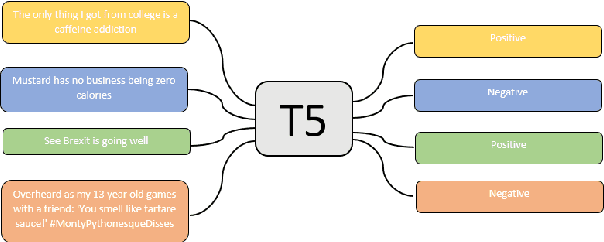
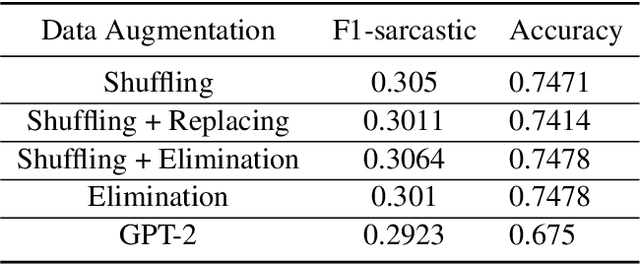
Abstract:Sarcasm is a term that refers to the use of words to mock, irritate, or amuse someone. It is commonly used on social media. The metaphorical and creative nature of sarcasm presents a significant difficulty for sentiment analysis systems based on affective computing. The methodology and results of our team, UTNLP, in the SemEval-2022 shared task 6 on sarcasm detection are presented in this paper. We put different models, and data augmentation approaches to the test and report on which one works best. The tests begin with traditional machine learning models and progress to transformer-based and attention-based models. We employed data augmentation based on data mutation and data generation. Using RoBERTa and mutation-based data augmentation, our best approach achieved an F1-sarcastic of 0.38 in the competition's evaluation phase. After the competition, we fixed our model's flaws and achieved an F1-sarcastic of 0.414.
UTNLP at SemEval-2021 Task 5: A Comparative Analysis of Toxic Span Detection using Attention-based, Named Entity Recognition, and Ensemble Models
Apr 10, 2021
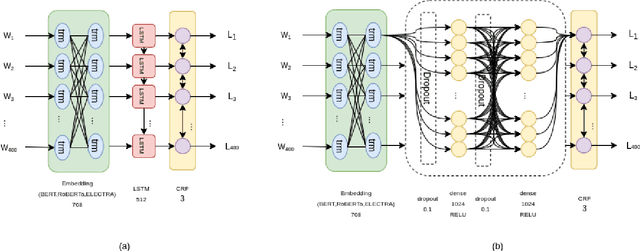
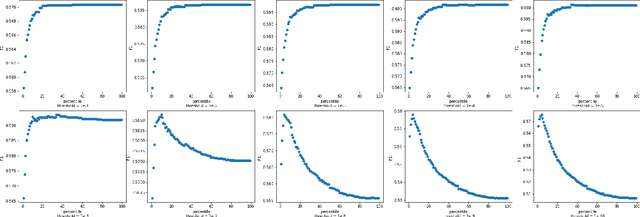
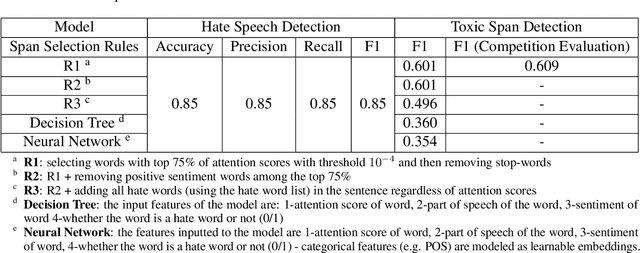
Abstract:Detecting which parts of a sentence contribute to that sentence's toxicity -- rather than providing a sentence-level verdict of hatefulness -- would increase the interpretability of models and allow human moderators to better understand the outputs of the system. This paper presents our team's, UTNLP, methodology and results in the SemEval-2021 shared task 5 on toxic spans detection. We test multiple models and contextual embeddings and report the best setting out of all. The experiments start with keyword-based models and are followed by attention-based, named entity-based, transformers-based, and ensemble models. Our best approach, an ensemble model, achieves an F1 of 0.684 in the competition's evaluation phase.
Sentiment Analysis of Persian-English Code-mixed Texts
Feb 25, 2021

Abstract:The rapid production of data on the internet and the need to understand how users are feeling from a business and research perspective has prompted the creation of numerous automatic monolingual sentiment detection systems. More recently however, due to the unstructured nature of data on social media, we are observing more instances of multilingual and code-mixed texts. This development in content type has created a new demand for code-mixed sentiment analysis systems. In this study we collect, label and thus create a dataset of Persian-English code-mixed tweets. We then proceed to introduce a model which uses BERT pretrained embeddings as well as translation models to automatically learn the polarity scores of these Tweets. Our model outperforms the baseline models that use Na\"ive Bayes and Random Forest methods.
Hybrid Model for Anomaly Detection on Call Detail Records by Time Series Forecasting
Jun 07, 2020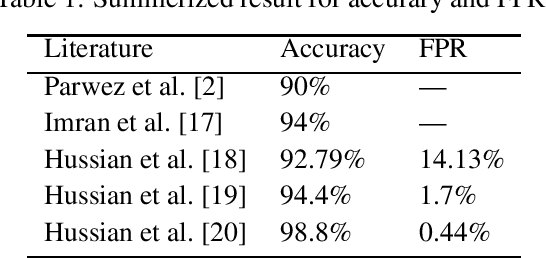
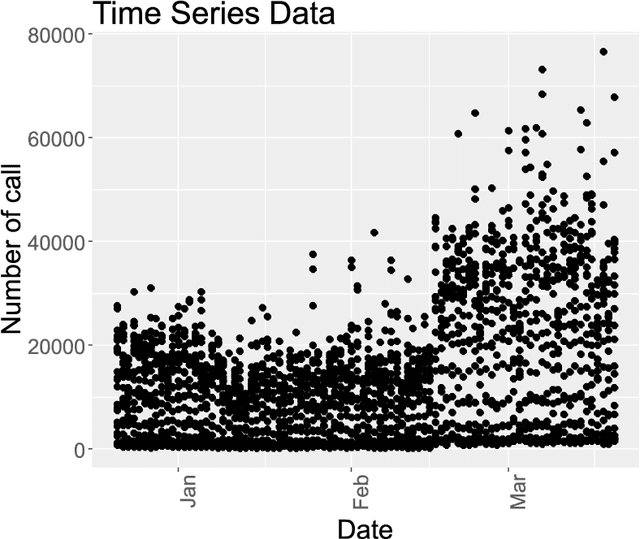
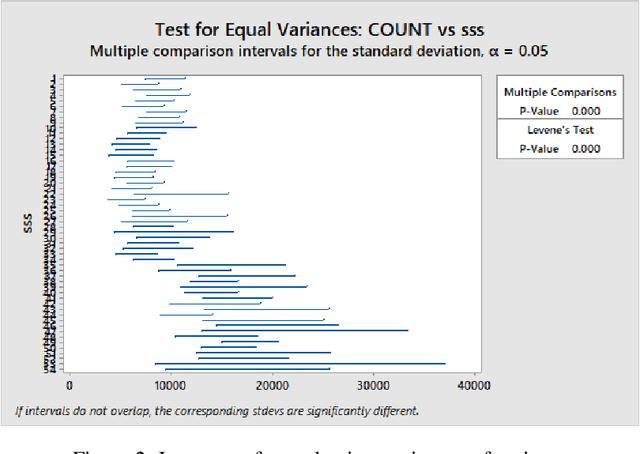

Abstract:Mobile network operators store an enormous amount of information like log files that describe various events and users' activities. Analysis of these logs might be used in many critical applications such as detecting cyber-attacks, finding behavioral patterns of users, security incident response, network forensics, etc. In a cellular network Call Detail Records (CDR) is one type of such logs containing metadata of calls and usually includes valuable information about contact such as the phone numbers of originating and receiving subscribers, call duration, the area of activity, type of call (SMS or voice call) and a timestamp. With anomaly detection, it is possible to determine abnormal reduction or increment of network traffic in an area or for a particular person. This paper's primary goal is to study subscribers' behavior in a cellular network, mainly predicting the number of calls in a region and detecting anomalies in the network traffic. In this paper, a new hybrid method is proposed based on various anomaly detection methods such as GARCH, K-means, and Neural Network to determine the anomalous data. Moreover, we have discussed the possible causes of such anomalies.
A Regression Framework for Predicting User's Next Location using Call Detail Records
Dec 22, 2019
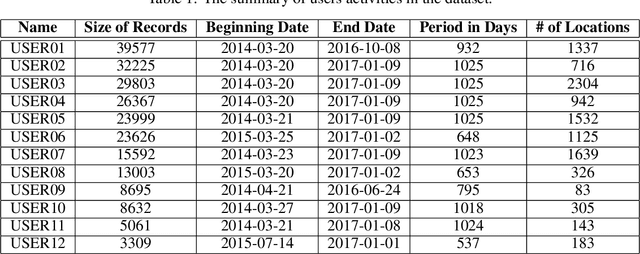
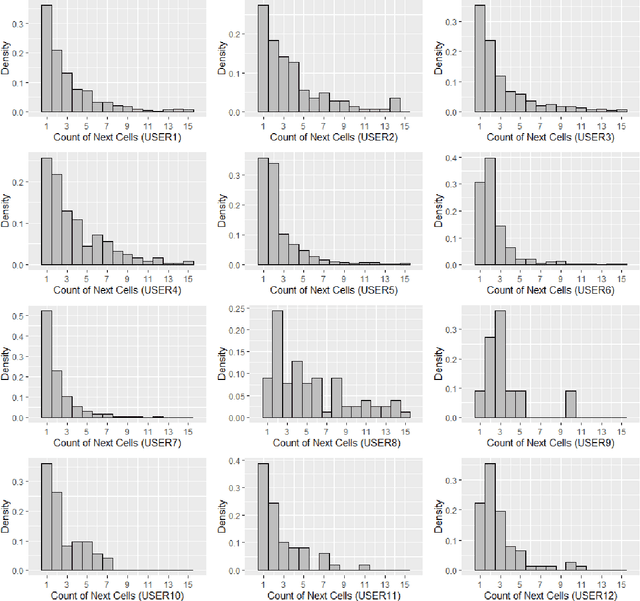
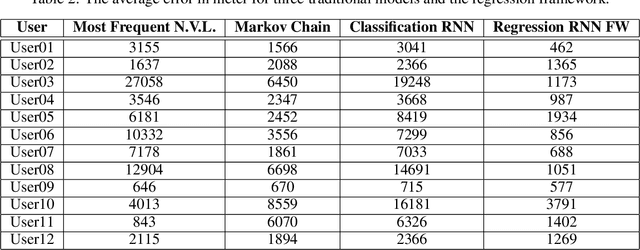
Abstract:With the growth of using cell phones and the increase in diversity of smart mobile devices, a massive volume of data is generated continuously in the process of using these devices. Among these data, Call Detail Records, CDR, is highly remarkable. Since CDR contains both temporal and spatial labels, mobility analysis of CDR is one of the favorite subjects of study among the researchers. The user next location prediction is one of the main problems in the field of human mobility analysis. In this paper, we propose a data processing framework to predict user next location. We propose domain-specific data processing strategies and design a deep neural network model which is based on recurrent neurons and perform regression tasks. Using this prediction framework, the error of the prediction decreases from 74% to 55% in comparison to the worst and best performing traditional models. Methods, strategies, the framework and the results of this paper can be helpful in many applications such as urban planning and digital marketing.
Real-time Travel Time Estimation Using Matrix Factorization
Dec 01, 2019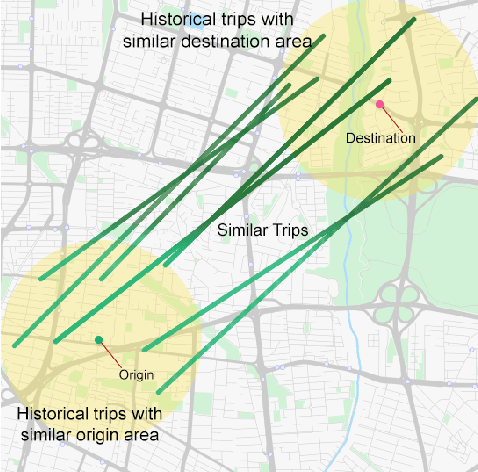

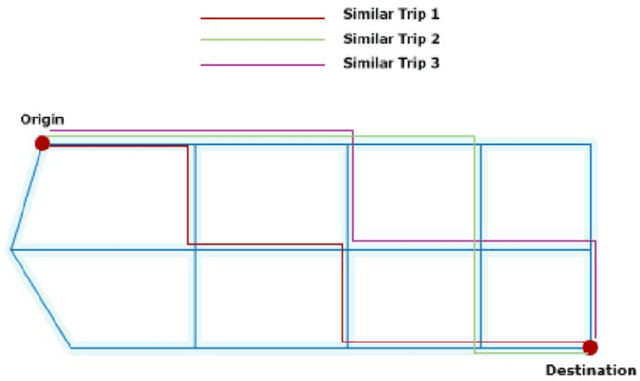
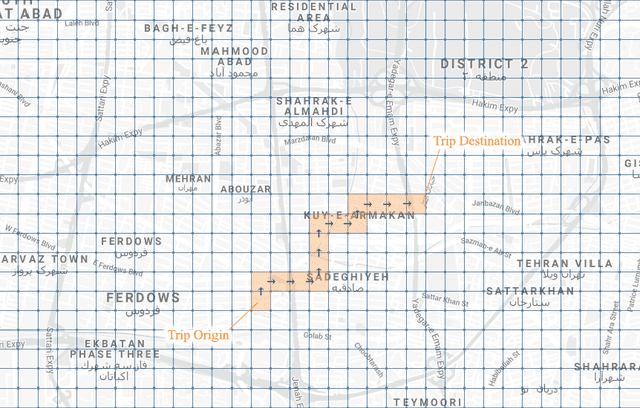
Abstract:Estimating the travel time of any route is of great importance for trip planners, traffic operators, online taxi dispatching and ride-sharing platforms, and navigation provider systems. With the advance of technology, many traveling cars, including online taxi dispatch systems' vehicles are equipped with Global Positioning System (GPS) devices that can report the location of the vehicle every few seconds. This paper uses GPS data and the Matrix Factorization techniques to estimate the travel times on all road segments and time intervals simultaneously. We aggregate GPS data into a matrix, where each cell of the original matrix contains the average vehicle speed for a segment and a specific time interval. One of the problems with this matrix is its high sparsity. We use Alternating Least Squares (ALS) method along with a regularization term to factorize the matrix. Since this approach can solve the sparsity problem that arises from the absence of cars in many road segments in a specific time interval, matrix factorization is suitable for estimating the travel time. Our comprehensive evaluation results using real data provided by one of the largest online taxi dispatching systems in Iran, shows the strength of our proposed method.
Predicting passenger origin-destination in online taxi-hailing systems
Oct 17, 2019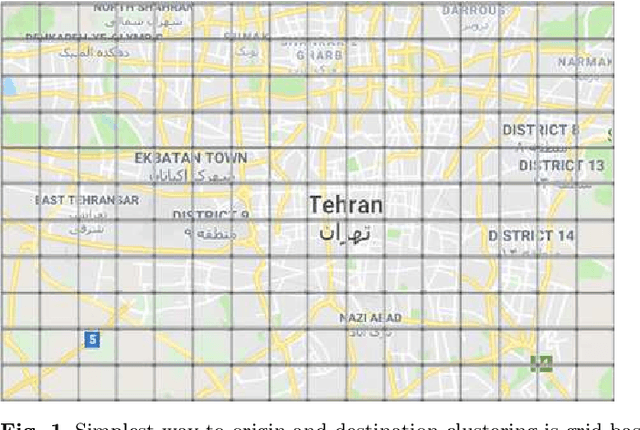

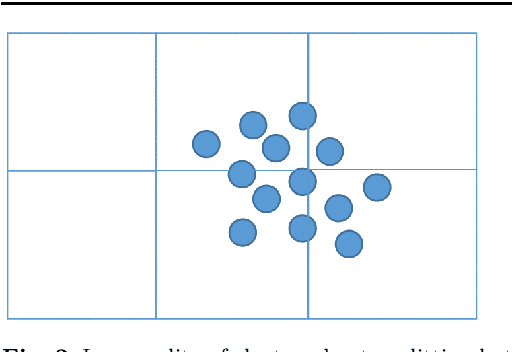

Abstract:Because of transportation planning, traffic management and dispatch optimization importance, the passenger origin-destination prediction has become one of the most important requirements for intelligent transportation systems management. In this paper, we propose a model to predict the origin and destination of travels which will occur in the next specified time window. In order to extract meaningful travel flows we use K-means clustering in four-dimensional space with maximum cluster size limitation for origin and destination. Because of large number of clusters, we use non-negative matrix factorization to decrease the number of travel clusters. We also use a stacked recurrent neural network model to predict travels count in each cluster. Comparing our results with other existing models show that our proposed model has 5-7% lower mean absolute percentage error (MAPE) for 1-hour time window, and 14% lower MAPE for 30-minute time window.
Short-term Demand Forecasting for Online Car-hailing Services using Recurrent Neural Networks
Jan 29, 2019
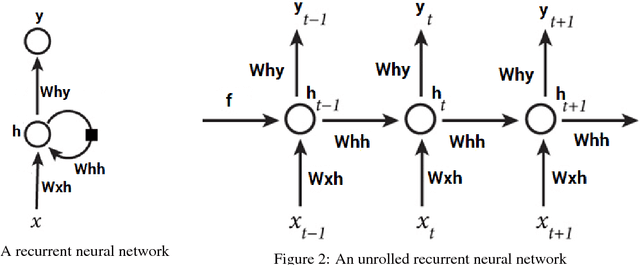

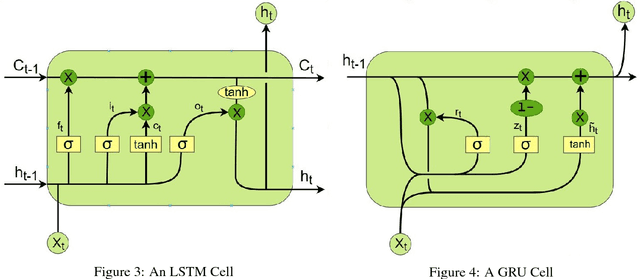
Abstract:Short-term traffic flow prediction is one of the crucial issues in intelligent transportation system, which is an important part of smart cities. Accurate predictions can enable both the drivers and the passengers to make better decisions about their travel route, departure time and travel origin selection, which can be helpful in traffic management. Multiple models and algorithms based on time series prediction and machine learning were applied to this issue and achieved acceptable results. Recently, the availability of sufficient data and computational power, motivates us to improve the prediction accuracy via deep-learning approaches. Recurrent neural networks have become one of the most popular methods for time series forecasting, however, due to the variety of these networks, the question that which type is the most appropriate one for this task remains unsolved. In this paper, we use three kinds of recurrent neural networks including simple RNN units, GRU and LSTM neural network to predict short-term traffic flow. The dataset from TAP30 Corporation is used for building the models and comparing RNNs with several well-known models, such as DEMA, LASSO and XGBoost. The results show that all three types of RNNs outperform the others, however, more simple RNNs such as simple recurrent units and GRU perform work better than LSTM in terms of accuracy and training time.
 Add to Chrome
Add to Chrome Add to Firefox
Add to Firefox Add to Edge
Add to Edge